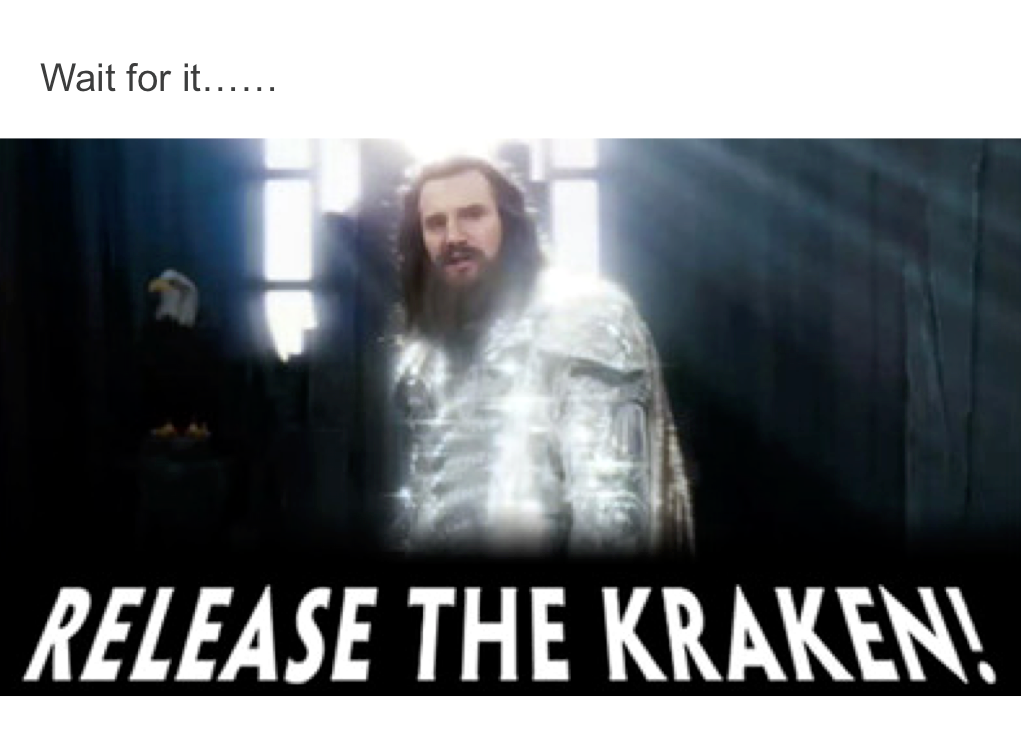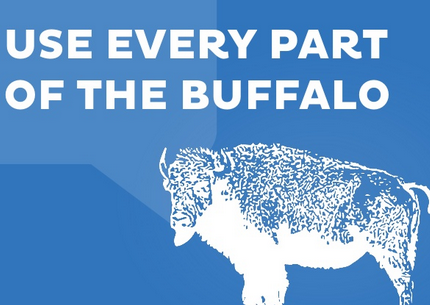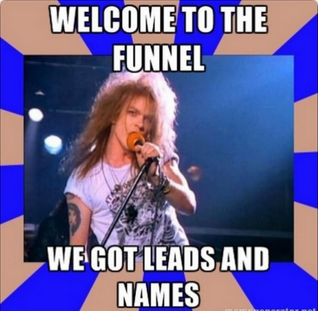One of my favorite things about content marketing events is that the presentations themselves–the slides, the design, the format and language–can be as educational as the ideas shared. This is especially true when the speaker lineup includes content marketing pioneers like Jon Miller of Marketo, Jason Miller of LinkedIn, Matt Heinz of Heinz Marketing, Justin Gray of LeadMD and Jesse Noyes of Kapost.
Actually, I can’t get some of those slides out of my head. Like this one:

(More on the content marketing Kraken below.)
So, in the spirit of learning from some of the best content marketers around, both their ideas and their presentations, check out 7 content marketing lessons from yesterday’s Putting Your Content to Work event.


Use Every Part of the Buffalo (or Turkey).
Each and every speaker at the event mentioned or referenced this concept. At Kapost, we call it the content pillar approach. Jesse referred to it as “using the whole buffalo” and Jon Miller explained it as “carving a turkey.” The gist is this: make sure you’re getting the most out of your major content assets. Don’t just publish an eBook, throw it behind a lead gen form, and wait for the leads to role in. Instead, fuel your social, blog, and paid distribution channels with bite-sized pieces of content from that eBook, which will attract leads who want to dig into the larger asset.
Don’t Confuse Names with Leads.
This is a big one. Just because someone downloads an eBook, it doesn’t mean they’re ready to be contacted by your sales team. It doesn’t even mean they’re the right buyer for your products or services…it just means they downloaded an eBook. The point? Tracking the new names in your database doesn’t really tell you how your content is performing. It’s an indicator, but the real way you’ll know your content strategy is working is by measuring the quality of your leads in the funnel. Do they close? Are they contirbuting to your pipeline? Those are the real questions you need to answer.
Don’t Assume You Know What Your Buyers Want.
Another huge takeaway from this event was that your content needs to start with questions. Check social networks, Quora, popular search terms for questions or topics you might be missing. Ask your customers directly what they want to know, or ask your support staff and sales team what they’re hearing from the mouths of prospects and customers. As Justin Gray pointed out, once you understand the questions, that’s when you bring in the marketing team to brainstorm the types of content that will best address those concerns.
Get Those Processes in Place (Like, Right Now).
Take this lesson and apply it to, well, pretty much every piece of your content marketing strategy. Here are a few examples: build out workflows with dates and responsible parties for each task in the content creation and distribution process. Figure out the best ways to get your sales team new content, then make that a key piece of your distribution strategy. Set specific dates for reviewing and refreshing your buyer personas. Basically, test what works internally and scrap what doesn’t. Establishing set processes will make everyone on your team more efficient, and will ensure you’re getting the best content out there.
Sometimes the People You’re Selling To Aren’t the People You’re Talking To.
Matt Heinz described this perfectly. It’s no longer enough to reach the person who will use your product or service. Now, you need to reach the decision maker, and you have to do it via the user. What does this mean? Teach the people interested in your organization–the ones with the day-to-day pain points–how to pitch your products to the people who make the actual buying decisions. Provide them with content relevant to their boss, give them the tools and stats they need to prove it’s a good investment. The way people purchase within organizations has changed, and if you’re only reaching one tier in a company, you’re probably not going to see that deal get done.
Hit Up Paid Channels, a.k.a, Release the Kraken.
Jason Miller said it best: “Only doing inbound marketing is like hanging out with the same kids you hung out with in highschool.” You’re not reaching anyone new, just sharing to the same networks that already know and love you. Put some paid support behind your content, and you’ll be able to target specific audiences where you might not have a prescence yet, which is crucial for both brand awareness and lead generation. Jason calls this “releasing the Kraken on your content.”
And, finally…
Puns Definitely Have a Place in Content Marketing.
This is a lesson I learned from the Putting Your Content to Work presentations. Just take a look at the titles from Justin Gray and Jason Miller:


Do I consider this permission to use puns in every single content marketing asset I create from now on?
I’ll be kraken puns left and right.

